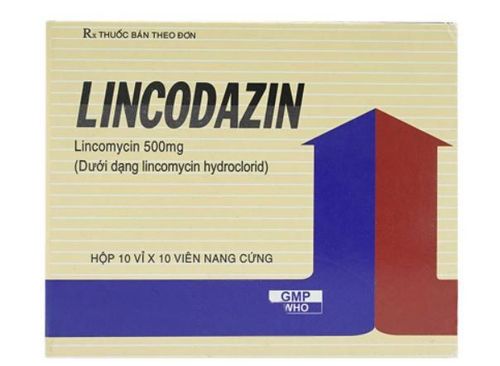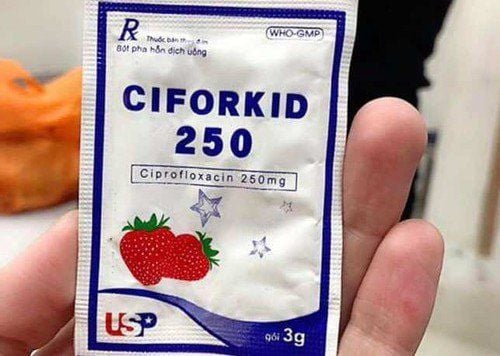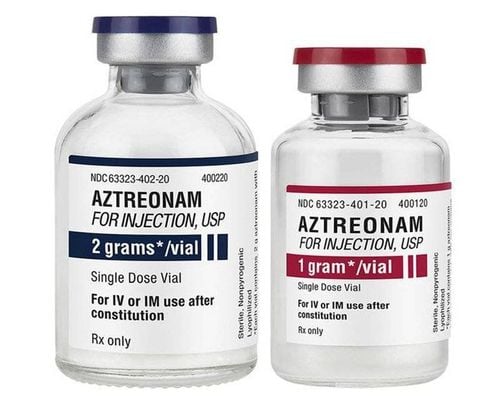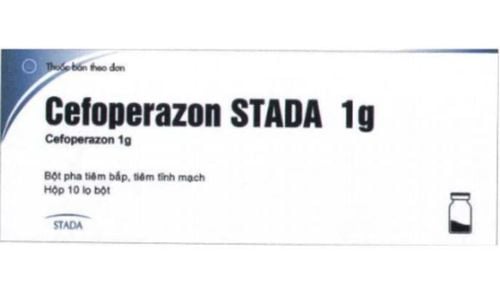This is an automatically translated article.
Jincetaxime 1g is an antiparasitic, antiviral, antifungal and anti-bacterial drug. The drug has the main ingredient is Cefotaxime sodium 1g, the dosage form is powder for injection. Using Jincetaxime can cause some unwanted side effects. Therefore, patients need to take Jincetaxime exactly as prescribed by the doctor.
1. Uses - Indications of the drug Jincetaxime
Jincetaxime 1g is indicated for the treatment of:
Blood infections; Bone and joint infections; Pericarditis caused by gram-positive cocci and gram-negative bacteria; Meningococcal disease ; Skin and soft tissue infections; Obstetric and gynecological and abdominal infections; Urinary tract infections, lower respiratory tract; Gonorrhea ; Prevention of postoperative infections.
2. When is Jincetaxime contraindicated?
Jincetaxime is contraindicated for:
People with hypersensitivity to the Cephalosporin component. Pregnant. Women who are breastfeeding.
3. Dosage and how to take Jincetaxime
Usage: Jincetaxime is administered intravenously and intramuscularly.
Dosage:
For adults:
Treatment of uncomplicated infections: Dose 1g/ 12 hours. Can be injected intramuscularly or intravenously. Treatment of meningitis and severe infections: Can be administered intramuscularly or intravenously at a dose of 2g/ 6 - 8 hours. Treatment of uncomplicated gonorrhea: Use a single dose of Jincetaxime: 1g intramuscularly. For the prevention of surgical infections: 1g dose. Should be injected 30 minutes before surgery. For children:
For children from 2 to < 12 years old: The dose is 50 mg - 150 mg/kg body weight/day x 3 - 4 times. Can be injected intramuscularly or intravenously. For infants > 7 days old: dose 75 - 150 mg/kg body weight/day x 3 times. Intravenous injection. For premature babies and newborns < 7 days old: 50 mg/kg body weight/day x 2 times. Intravenous injection. Note: For patients with renal impairment, the dose of Jincetaxime should be reduced by half.
4. Jincetaxime drug interactions
Jincetaxime may have drug interactions when combined with Probenecid, fosfomycin and azlocillin. To avoid interactions, before being prescribed Jincetaxime, the patient should inform the doctor about the drugs they are using, including functional foods. The doctor will base on that to prescribe the appropriate Jincetaxime.
5. Jincetaxime side effects
At therapeutic doses, Jincetaxime is well tolerated. However, in the process of using Jincetaxime, patients may still experience side effects such as:
Hypersensitivity; Fever; Eosinophilia ; Nausea and vomiting; Stomachache; Diarrhea; Pseudomembranous colitis ; Hematologic changes; Headache; Dizziness; Illusion; Arrhythmia. If you experience these symptoms, the patient should stop using Jincetaxime and notify the doctor for appropriate treatment.
6. Precautions when using Jincetaxime
Caution when using Jincetaxime for people with a history of penicillin hypersensitivity or kidney failure. Absolutely do not use when Jincetaxime has signs of discoloration, mold, watery or expired. Above is all information about Jincetaxime, patients need to carefully read the instructions for use, consult a doctor / pharmacist before using. Absolutely do not arbitrarily buy Jincetaxime at home because there may be unwanted side effects.
Please dial HOTLINE for more information or register for an appointment HERE. Download MyVinmec app to make appointments faster and to manage your bookings easily.













